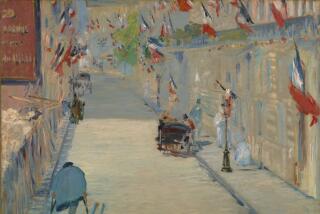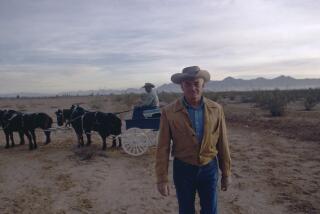DECOR : Pioneering Artists Captured an Era
- Share via
The first “eyewitness” news reporters to chronicle the westward expansion of the United States were the artists who accompanied the homesteaders and adventurers--or even preceded them.
“At least a dozen auctions specializing in Western art take place all around the country every year,” says Rudolf Wunderlich, a leading authority on Western art. As interest increases and many of the best Western works are acquired by museums, demand has pushed up the price of the relatively few masterpieces that remain in the marketplace.
With certain early paintings or late-cast Frederic Remington bronzes starting around $50,000, however, Western art can still be had for a lot less than those Impressionist works with which they competed for attention earlier this century.
The first artists of the American West reported directly from the scene of the action, sometimes recording their observations faithfully, sometimes sensationalizing the facts in an effort to add fire to the cause of westward expansion.
Inspired by the successes of the early masters, a second generation of adventurers followed these pioneers west. Their colorful and evocative works continued to attract the attention of both the American and the European public.
“Correct pictures of what is truly remarkable in our scenery awaken instant attention in Europe,” wrote Henry T. Tuckerman in 1867. “If our artists, therefore, wish to earn trophies abroad, let them seize upon themes essentially American.”
The second generation of Western artists did precisely that, with the best of them--”reporters” such as William de la Montagne Cary and landscape painters such as Albert Bierstadt--producing paintings that now hang in museums and galleries across the country.
“The third category of Western art belongs to the Romantics,” said Wunderlich, president of Chicago’s Mongerson Wunderlich Gallery. These artists, he said, combined showmanship with facts, enlivening their canvases with a dash of fantasy and imagination.
Enormously popular with the public, it is these narrative works--the Remington paintings, bronzes and illustrations and the Charles Russell sketches, for example--that helped build and maintain the legend of the Old West. Here, Native Americans hunt buffalo with spears, cowboys bust broncos and shootouts blaze on the outposts of civilization.
Filled with action and detail, 19th-Century images of the West tended to gloss over the loneliness and hardships of the pioneers. Artists chose instead to celebrate the dream of a promised land where all things were possible.
“Considering how common wagon trains were and how many settlers made their way West, paintings of emigrants are relatively rare,” Wunderlich said. “Such images have never caught the public’s imagination in the way that scenes featuring American Indians and cowboys on horseback have.”
Toward the end of the 19th Century, a group of artists settled in Taos, in the Territory of New Mexico, forming the Taos Society of Artists. Their paintings, which are generally Impressionistic in style, capture the sun-bleached and wind-burnt landscape of the Southwest and often portray the secular and religious lives of Native Americans.
“By the early 1900s, the Old West of myth was dead, and the popularity of Western art was waning,” Wunderlich said. “Impressionism had begun to emerge, and people were most interested in what was new.”
Today, he said, images of the Old West are enjoying a renaissance.
“It was the most romantic period of our history,” he said, “and it was very short.”
More to Read
The biggest entertainment stories
Get our big stories about Hollywood, film, television, music, arts, culture and more right in your inbox as soon as they publish.
You may occasionally receive promotional content from the Los Angeles Times.










